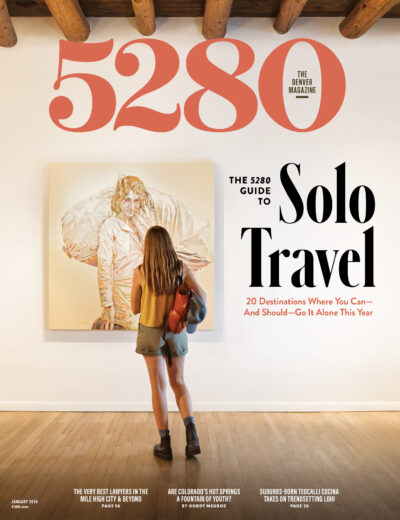The Local newsletter is your free, daily guide to life in Colorado. For locals, by locals.
In 1908, at age 18, Tokio Ueyama moved from Japan to California to attend art school. For the next three decades, the oil painter traveled the world, hosted exhibits, got married, and mingled with luminaries, including iconic Mexican artist Diego Rivera. But Ueyama’s status in America’s art community couldn’t save his wife and him from the perils associated with one of the darkest periods in the country’s history. In 1942, after the attack on Pearl Harbor, the U.S. government detained more than 100,000 Japanese Americans, including the Ueyamas, and imprisoned them in incarceration camps around the country.
The couple was sent to what was then known as the Granada Relocation Center (and is now called the Amache National Historic Site) in rural southeast Colorado, where some 10,000 prisoners were housed. Despite his captivity, Ueyama found ways to keep painting, including using insulation board as a hard backing for his canvases. That same board was used to build the barracks that confined him. Now, a little more than 80 years later, many of the works he produced inside Amache will be displayed as part of The Life and Art of Tokio Ueyama at the Denver Art Museum (DAM). “These artworks are beautiful,” says JR Henneman, DAM’s curator and director of the Petrie Institute of Western American Art, “but they shouldn’t lure you into thinking life there was easy or pleasant.”
Henneman began planning the exhibition two years ago, a process that included sourcing 41 pieces from the Japanese American National Museum in Los Angeles and the Ueyama family’s personal collection. “This was a time of great dislocation and loss,” Henneman says. “The fact that he continued striving for beauty is a remarkable act of survival and resistance.” Perhaps more remarkable is that Ueyama’s style didn’t change despite his imprisonment and austere surroundings. “He loves color, which pulls through throughout his career,” Henneman says. That’s evident in the 23 landscapes, still lifes, and portraits from Ueyama’s time at Amache featured in the exhibit, such as “Untitled (barracks with basketball hoop),” which is pictured above.

Outside the camp, Ueyama had been a leader in LA’s tight-knit Japanese American art scene, and he continued that work inside the camp by teaching adult painting classes three days a week, a practice that brought some normality to those held captive there. After his release in 1945, Ueyama and his wife returned to Los Angeles, where he opened a gift shop in the Little Tokyo neighborhood before his death in 1954.
When The Life and Art of Tokio Ueyama opens (July 28 through June 2025), it will be the first time an Amache prisoner’s work will grace one of DAM’s galleries, an event Henneman believes will inspire visitors to learn more about the treatment of Japanese Americans during World War II. “I hope people are surprised by Ueyama’s artwork,” she says. “There is nothing about his art that’s obviously ‘Japanese.’ He was cosmopolitan, well-traveled, and his life and work defy stereotypes.”









